12 drought-tolerant vegetables that will grow well in dry conditions
There is a surprisingly wide range of vegetables to discover that can cope without lots of water

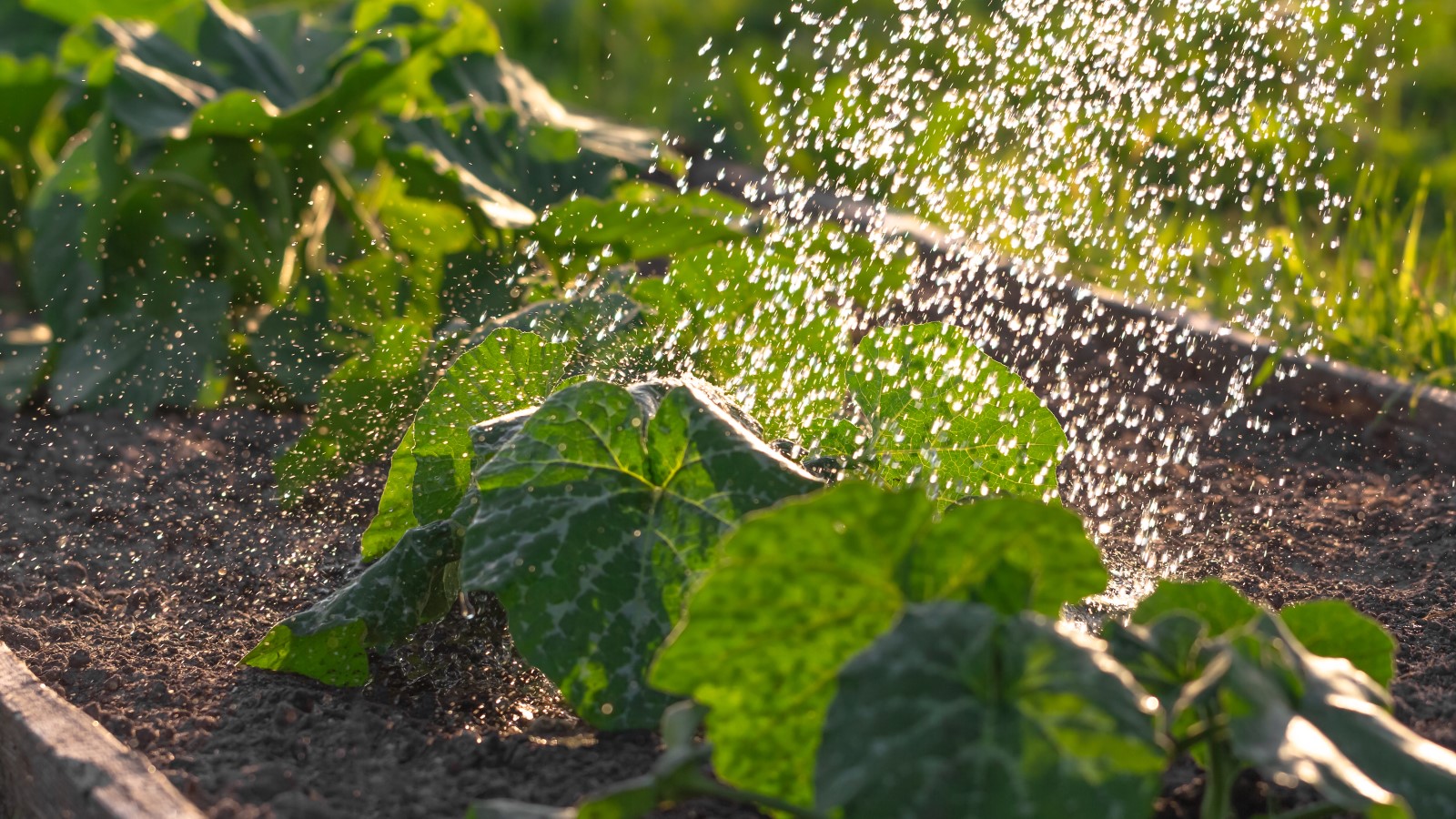
Watering is one of the most vital jobs you need to do when growing vegetables. All crops need water to survive and produce a harvest, however your life can be made a bit easier by selecting some of the most drought-tolerant vegetables.
If you live in a particularly hot and dry area, then it pays to consider drought tolerant planting ideas when thinking about your backyard. Luckily there are a range of vegetables that fit the bill and are tolerant to dry conditions.
Some of these drought-tolerant vegetables are perennials, such as rhubarb and asparagus, while there is also a wide selection of annuals that can cope with the dryness once the plants are established.
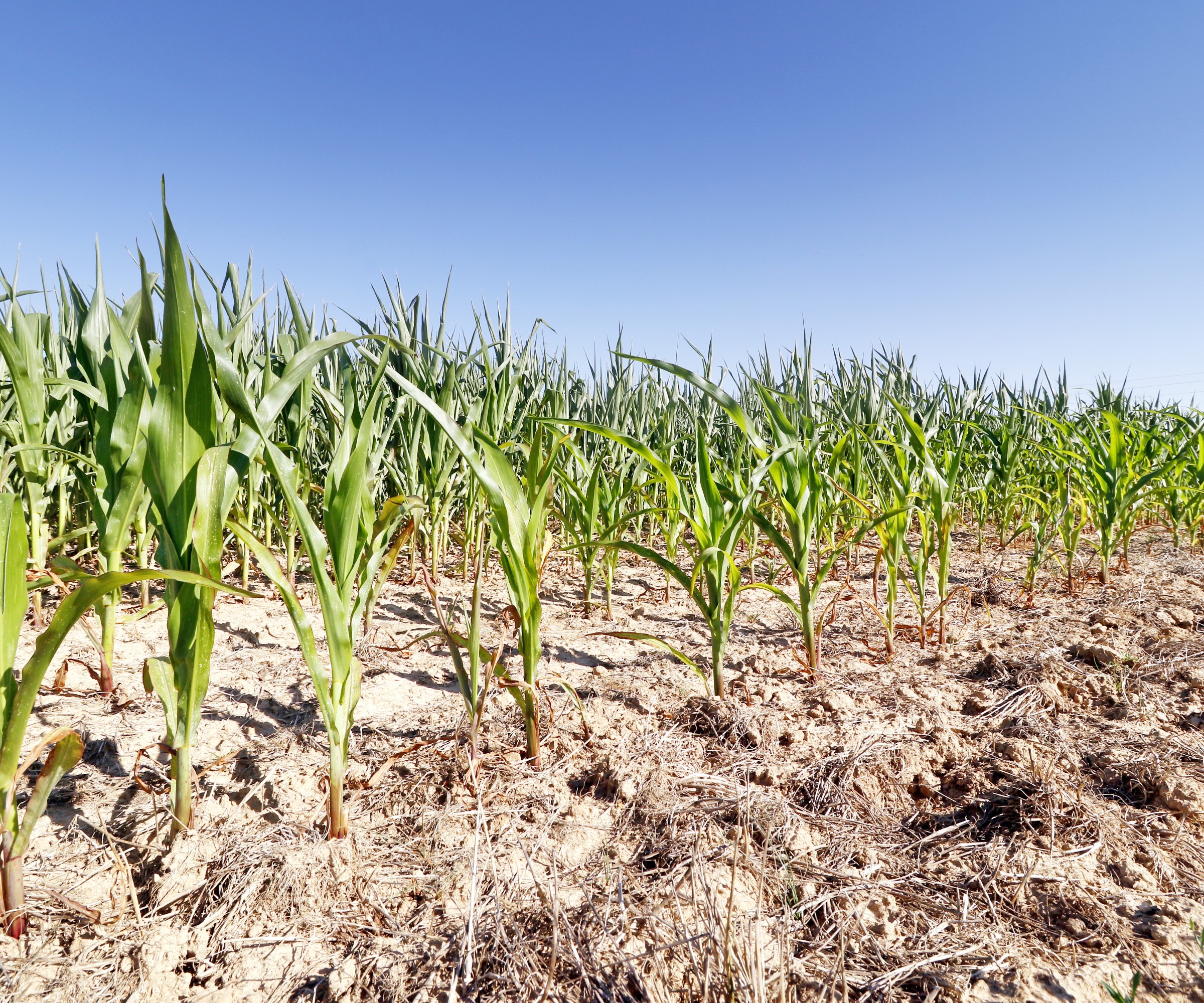
Corn is a crop suited to hot and dry conditions
12 drought-tolerant vegetables to grow
Just as there are drought-tolerant shrubs for beds and borders and drought-tolerant grass for lawns, there are drought-tolerant vegetables that you can take advantage of in your kitchen garden or vegetable garden. All will need water when young, but when they are established the crops can be more drought tolerant than you might expect.
It is always important to monitor crops and judge when to water plants. Just because they are drought tolerant, it does not mean they can survive without water completely. Many will produce a smaller yield without adequate water and a lack of moisture while developing their fruits can impair the eventual crop.
We take a look at 12 drought-tolerant crops to consider in your vegetable garden. The amount of water required for any of these crops will be different if you are growing them in a vegetable container garden as the plants will need more water in pots than when growing in the ground.
1. Rhubarb
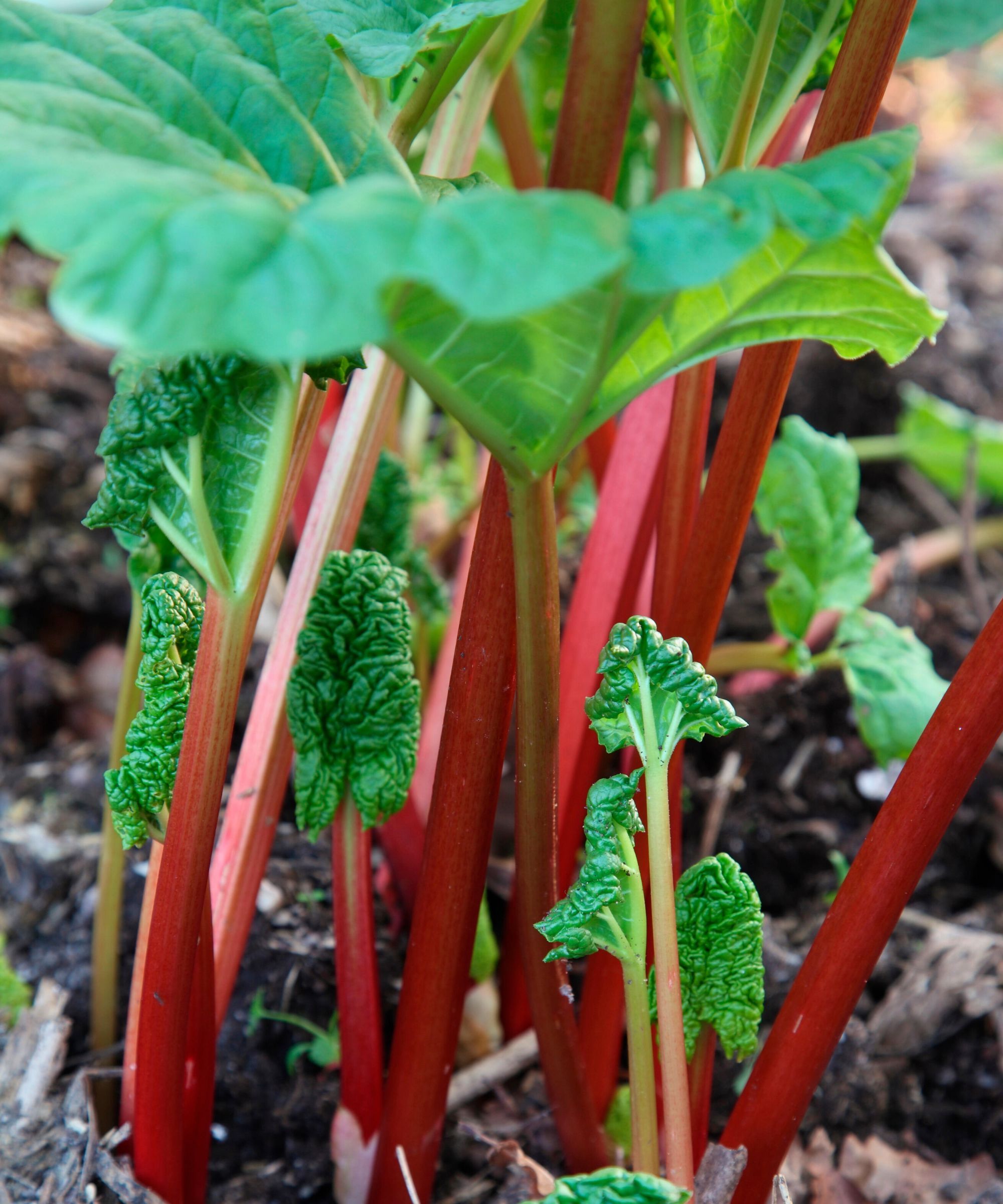
Rhubarb stores moisture in its large root system
- Crop group: Perennial
- Drought tolerance: High
- Harvest time: Early summer
- Where to grow: Sun or partial shade
When you are growing rhubarb, an established crown is very drought tolerant and it does not need a lot of water. When planting rhubarb, or transplanting rhubarb, it will need regular water to get the root developed and the crown established. However, in the years after that the crown will only need minimal watering and only during prolonged dry spells. It is the plant’s large and fibrous root system that helps it be able to go for longer periods of time without water.
Design expertise in your inbox – from inspiring decorating ideas and beautiful celebrity homes to practical gardening advice and shopping round-ups.
So you can relax in the knowledge you will have a good rhubarb harvest year-after-year with minimal effort. If you grow forced rhubarb, then you will need to water more regularly after forcing the crown to help replenish its strength.
Buy rhubarb crowns at Nature Hills.
2. Swiss chard
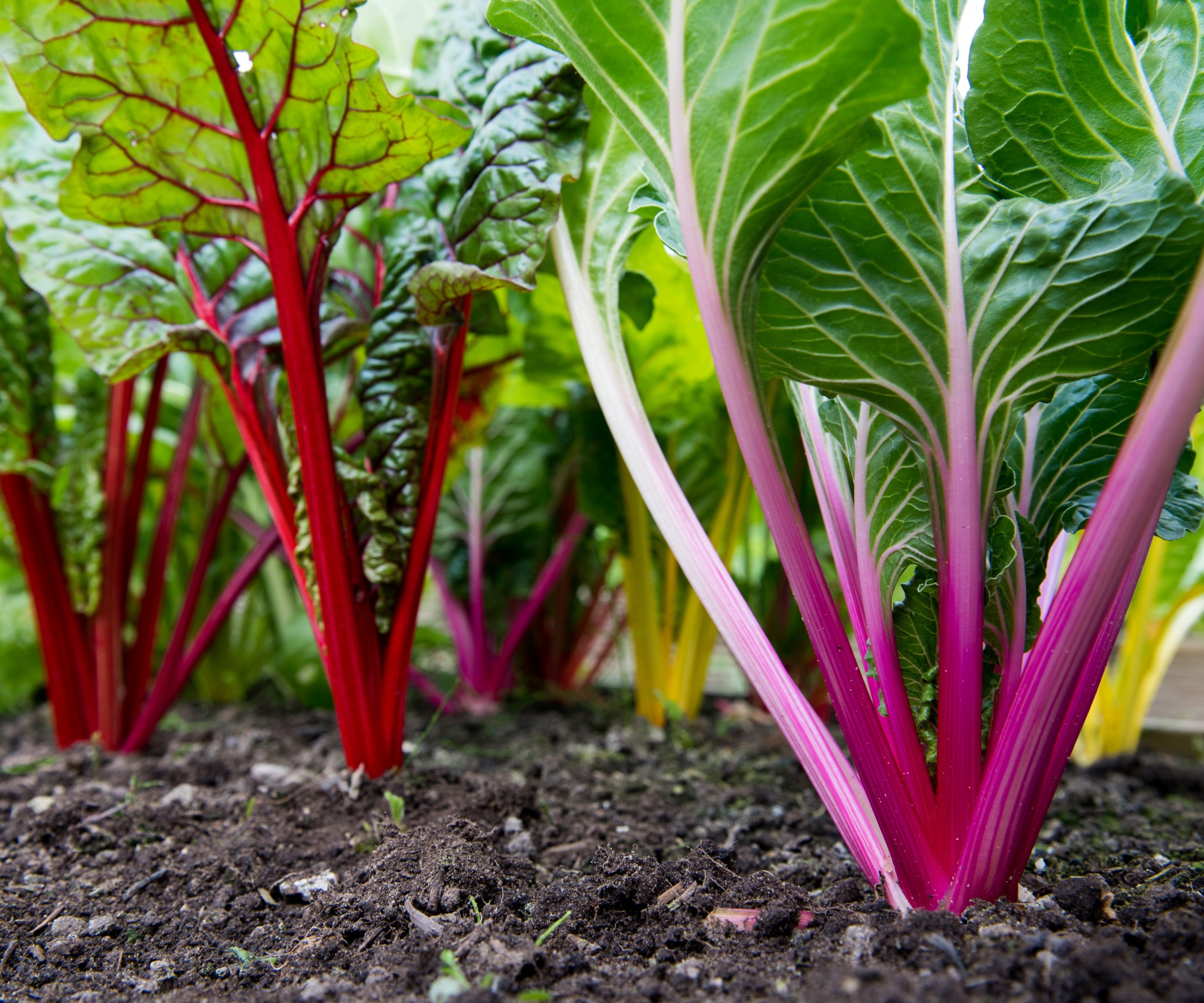
Chard can bring color to a vegetable garden
- Crop group: Miscellaneous
- Drought tolerance: Medium
- Harvest time: Year-round
- Where to grow: Sun or partial shade
Swiss chard is one of the easiest vegetables to grow. It is a leafy green that comes in a variety of colors and sizes. It is an under-valued vegetable that grows fast and is tolerant of both drought and heat. The crop wants full sun and rich soil to grow and the first leaves can be ready to harvest around 50 days after planting.
All chard varieties are drought tolerant, but the likes of 'Fordhook Giant', 'Rhubarb', and 'Rainbow' chard are all fantastic additions to any vegetable garden as they crop year-round and can provide a harvest of swiss chard in cooler temperatures.
Swiss chard is also one of the best vegetables to grow in pots, but will need more watering than crops in the ground.
Buy Swiss Chard 'Fordhook Giant' seeds at Burpee.
3. Asparagus
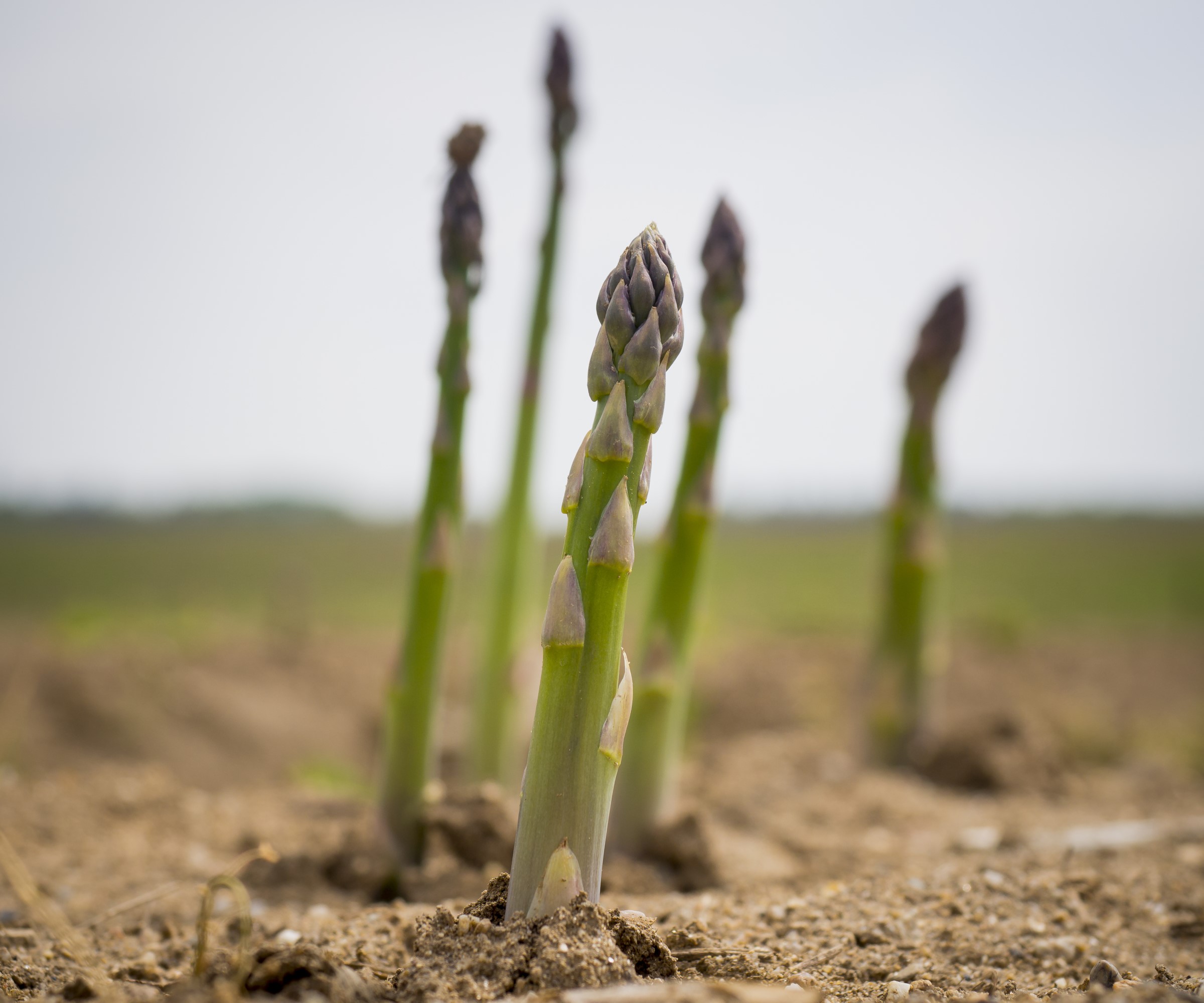
Established asparagus needs little watering except in extended hot spells
- Crop group: Perennial
- Drought tolerance: High
- Harvest time: Spring to early summer
- Where to grow: Full sun
Asparagus is often regarded as a luxury crop to grow and it can take three years from when you plant asparagus to harvesting the first of its delicious spears.
Young asparagus will need regular watering to help them establish, but mature asparagus is very drought tolerant and can survive through dry periods. The crop can be happy in hot and dry conditions and, the good news for anyone growing asparagus, is that the crop will only need watering in long and dry spells.
Buy asparagus crowns at Nature Hills.
4. Jerusalem artichoke
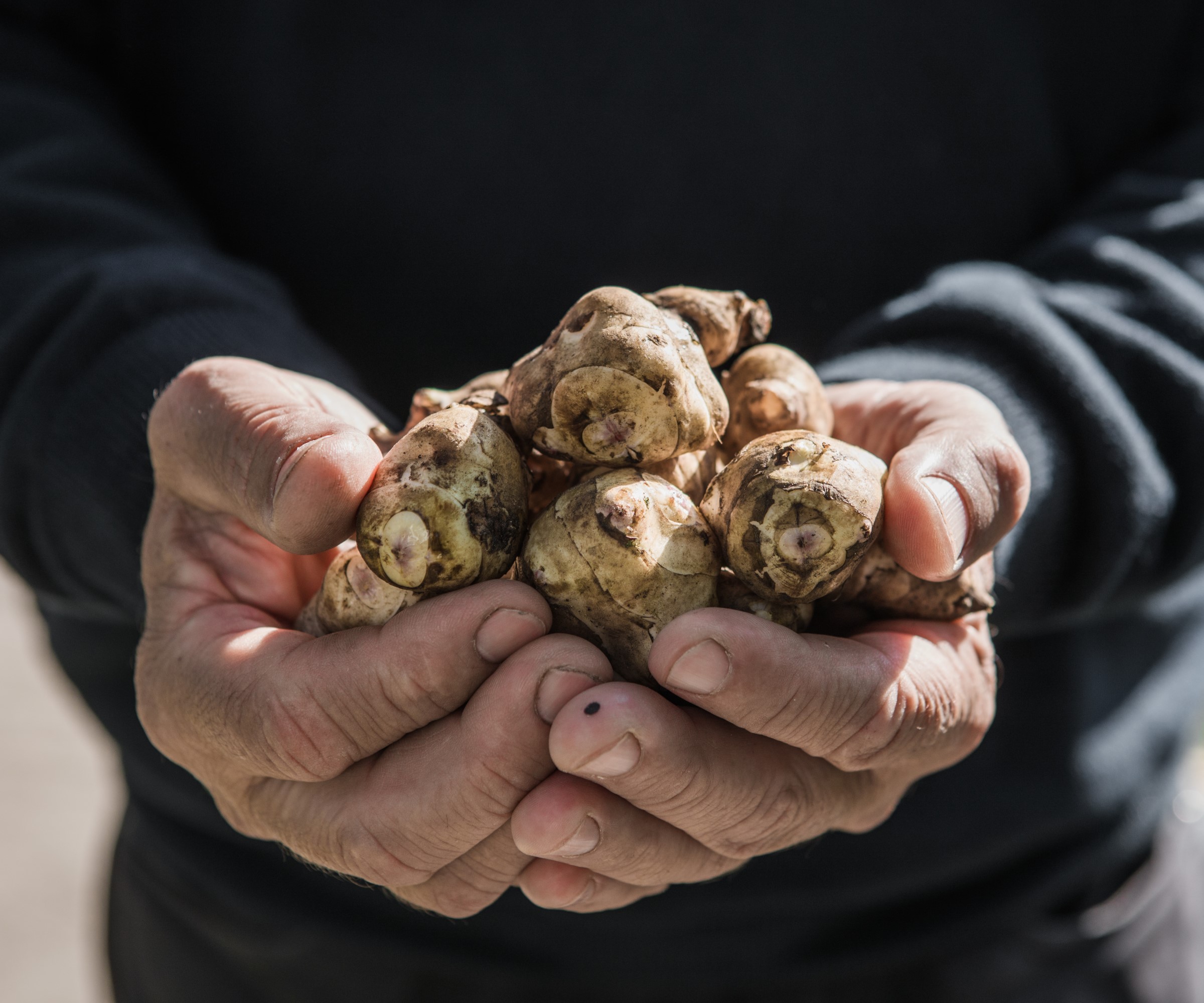
Jerusalem artichokes can grow to 10 feet tall
- Crop group: Miscellaneous annual
- Drought tolerance: High
- Harvest time: Winter
- Where to grow: Full sun
Jerusalem artichokes, just like globe artichokes, are so simple to grow and need very little in the form of maintenance. They are also drought tolerant and only need watering in extended periods of dry weather. All you really need to do is plant the tubers in the ground in spring, give them a bit of watering to get them going, and let them do their thing.
Come winter you will have an abundance of tubers to harvest. Simply save some of them to re-plant again for next year’s crop. However, while they can survive long periods of drought it can impact their harvest and a regular supply of water will mean more tubers.
Buy Jerusalem artichoke tubers at Walmart.
5. Corn
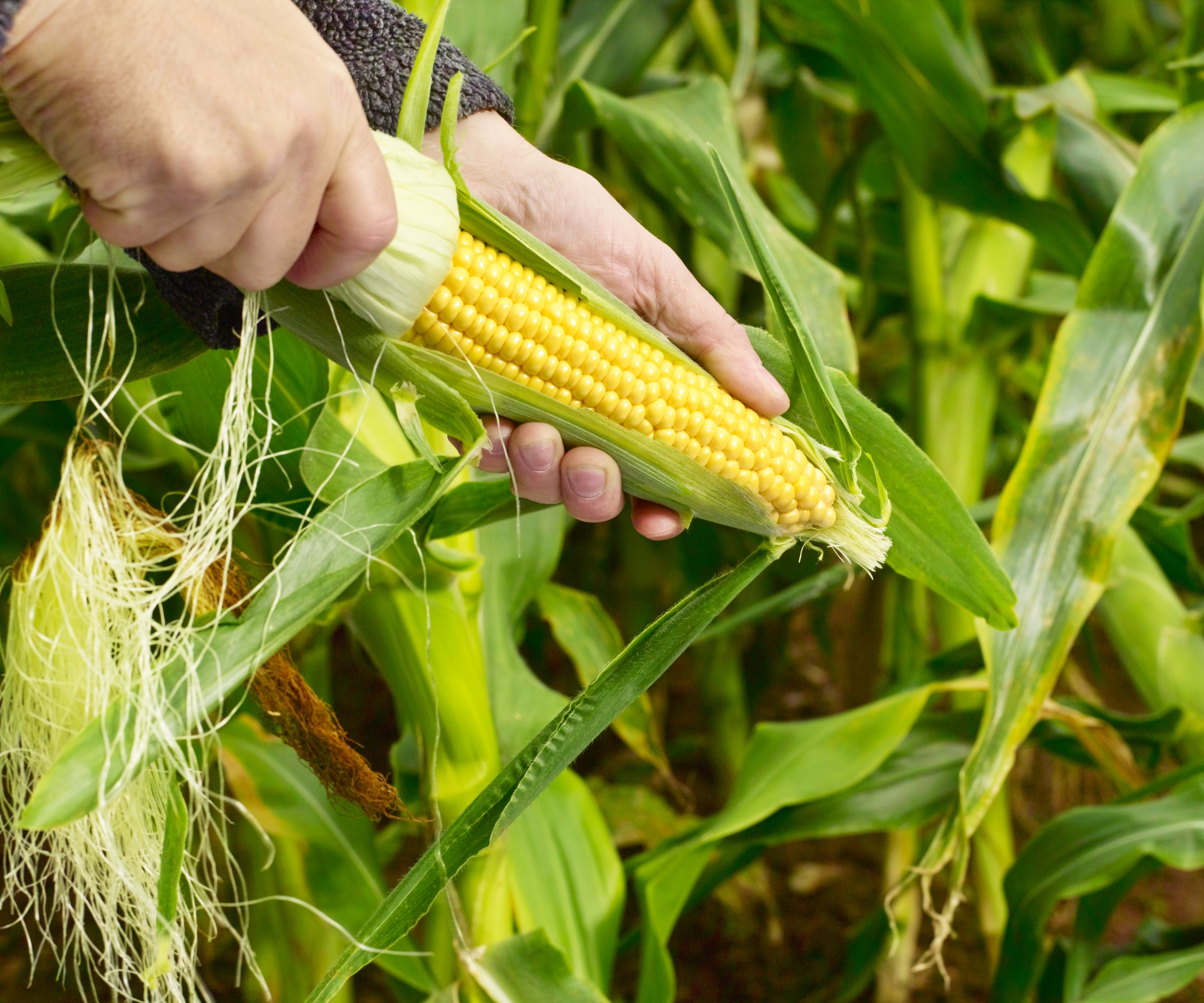
Corn has long roots to search for water deep below the surface
- Crop group: Miscellaneous annual
- Drought tolerance: Medium
- Harvest time: Summer
- Where to grow: Full sun
Sweetcorn is able to withstand drought thanks to its long root system, which is long and fibrous and able to delve deep into the ground in search of available water. It also has a novel method of rolling its leaves when water is scarce to help it survive hot and dry days as it reduces the amount of water lost through evaporation. The most important time for watering is when the cobs are starting to swell.
Growing corn means you can enjoy succulent homegrown cobs when you harvest the corn over the summer months. The sign a cob is ready is when its end tassels turn brown and a creamy liquid comes out a kernel when you pierce it with a fingernail.
6. Pole beans
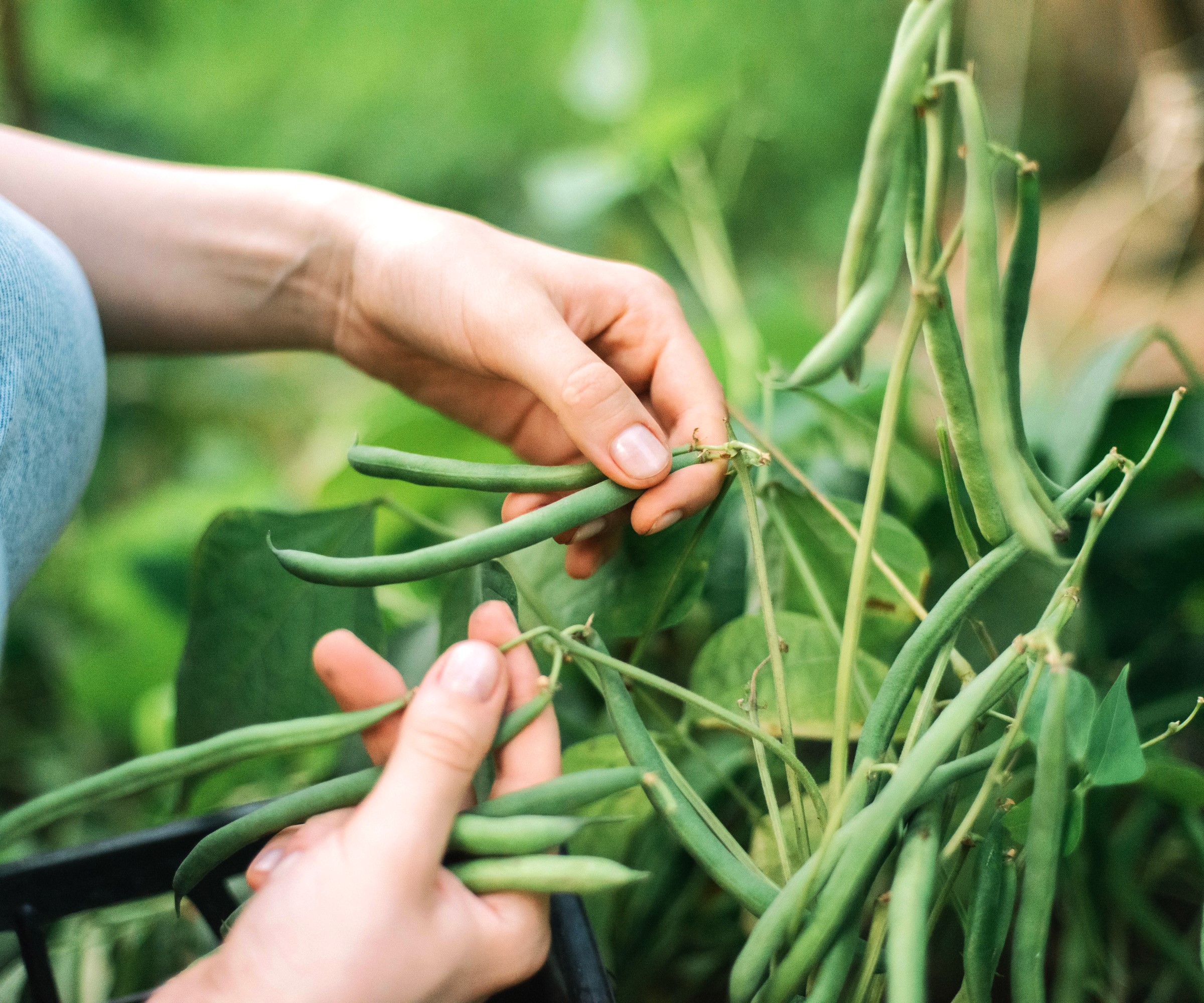
Pole beans tend to be grown vertically up canes or structures
- Crop group: Annual legume
- Drought tolerance: Medium
- Harvest time: Late summer
- Where to grow: Full sun
As a whole, beans are drought-tolerant vegetables to grow. Bush beans are also drought resistant, but pole beans are the best to choose simply because you can get such a bigger harvest in a similar space by growing them vertically.
Pole beans can put out long roots that can search for water deep down in the soil, where other crops will not explore. There are varieties of pole beans, such as ‘Rattlesnake’ that are especially drought-hardy for very dry sites. You will see pole beans also referred to as green beans or runner beans, while another viable option is to grow French beans that are also tolerant of drought.
Buy Pole Bean 'Rattlesnake' seeds at Walmart.
7. Chili Pepper
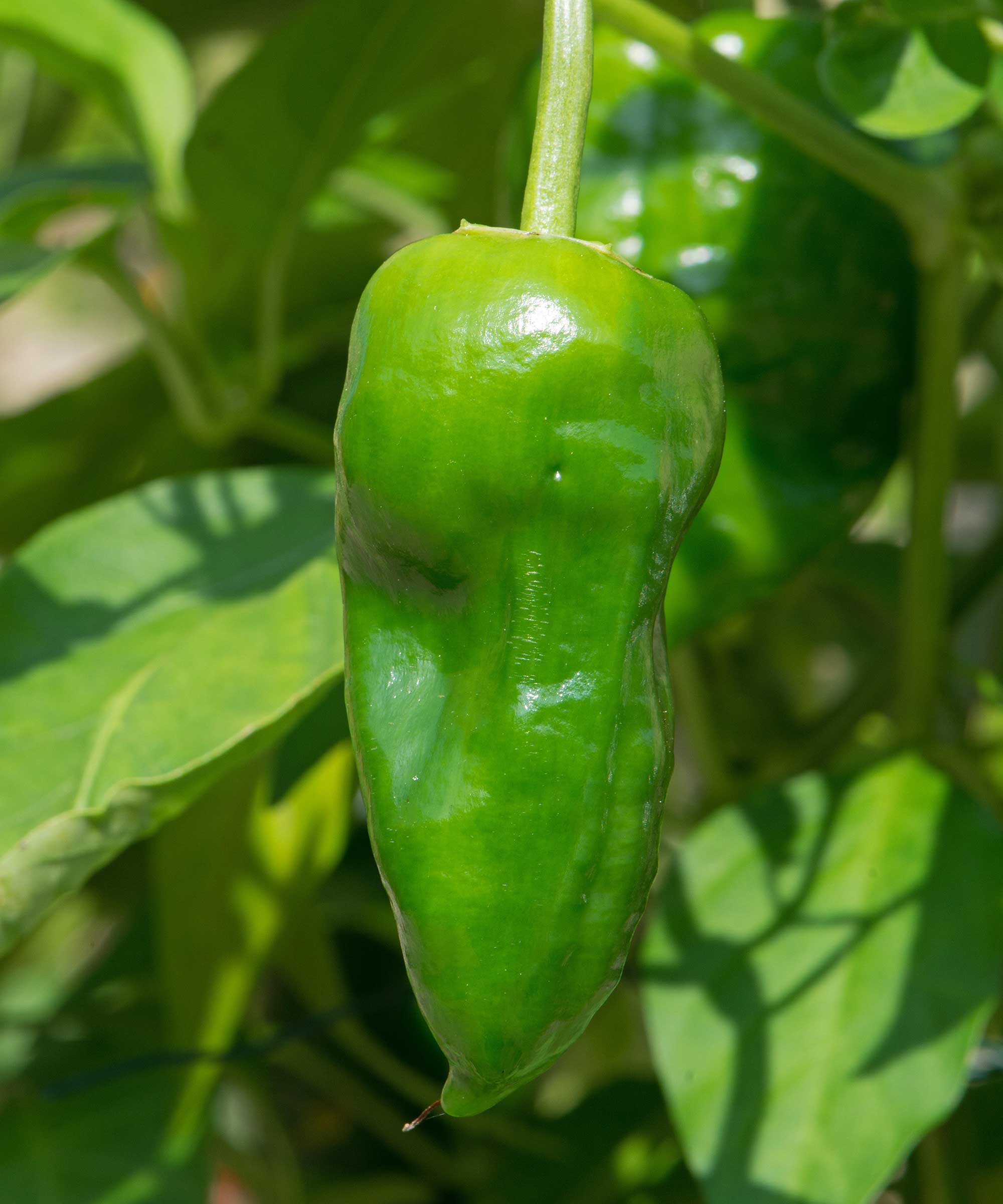
Chillies love full sun and can cope with dry conditions
- Crop group: Annual solanaceae
- Drought tolerance: High
- Harvest time: Summer
- Where to grow: Full sun/indoors
Chilli peppers are a crop that is adapted to grow and survive in hot and dry climates. The drier the conditions the plant experiences, the hotter the chillies will actually be, the heat is the plant’s defence against drought and lots of sun.
There are many types of chili peppers to choose from, coming in a range of colors, shapes, and flavors. They do need water to get established and a lack of water will impact the yield, but the plants are drought tolerant.
Chili peppers, and also bell peppers, are often thought of as crops to grow in a greenhouse but can prosper outdoors as long as the summers are hot.
8. Squash
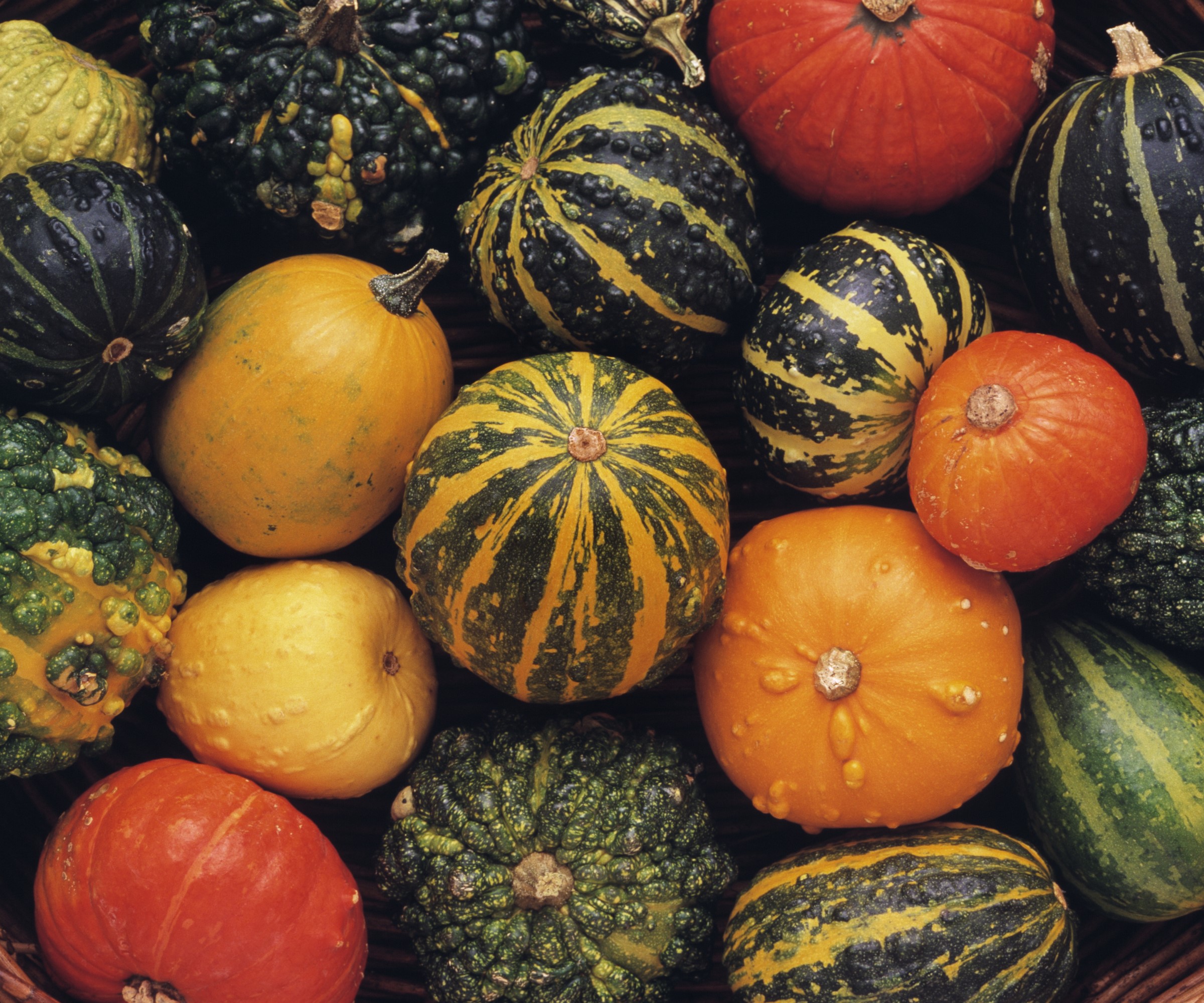
There are many different types of squash to choose from
- Crop group: Annual cucurbit
- Drought tolerance: Medium
- Harvest time: Summer to fall
- Where to grow: Full sun
Squash are heavy feeders when it comes to vegetables, though they are quite drought tolerant once they are established in the yard. They enjoy lots of sun and rich soil to grow strong and healthy. They will also need lots of space to grow in and regular water when they are young, around one inch of water per week.
When they mature, the plants become more tolerant of drought. Their leaves are large and will shrivel in the absence of water, which can look worrying, however it does recover quickly. The large leaves are also of benefit during dry periods as they shade the ground and help reduce water loss, this is also the case when growing pumpkins.
Given the sheer amount of varieties of squash there are to choose from, including both summer and winter squash that are both drought tolerant, they are well worth considering for a dry garden.
9. Melon
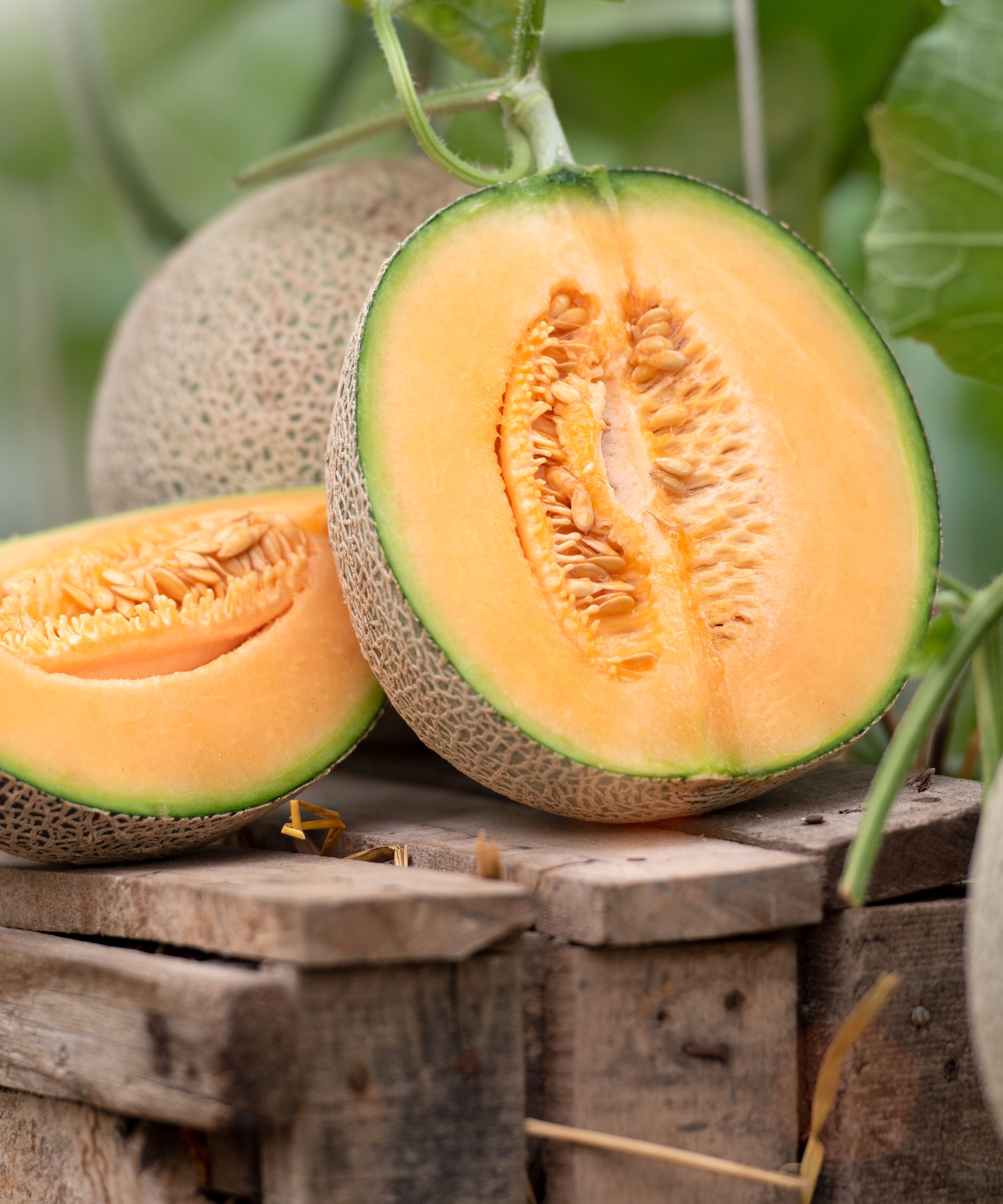
Melons want a warm soil of 70-75˚F to grow
- Crop group: Annual cucurbit
- Drought tolerance: Medium
- Harvest time: Summer
- Where to grow: Full sun/indoors
It might be surprising to know that, despite melons containing a high amount of moisture, they are actually drought tolerant crops. While water is recommended while they are growing and setting fruit – a lack of water can cause fruits to crack – there are varieties that can grow in dry conditions.
For example, the melon variety ‘Desert King’ is a drought-tolerant type that can provide fruits even without requiring regular watering.
10. Arugula
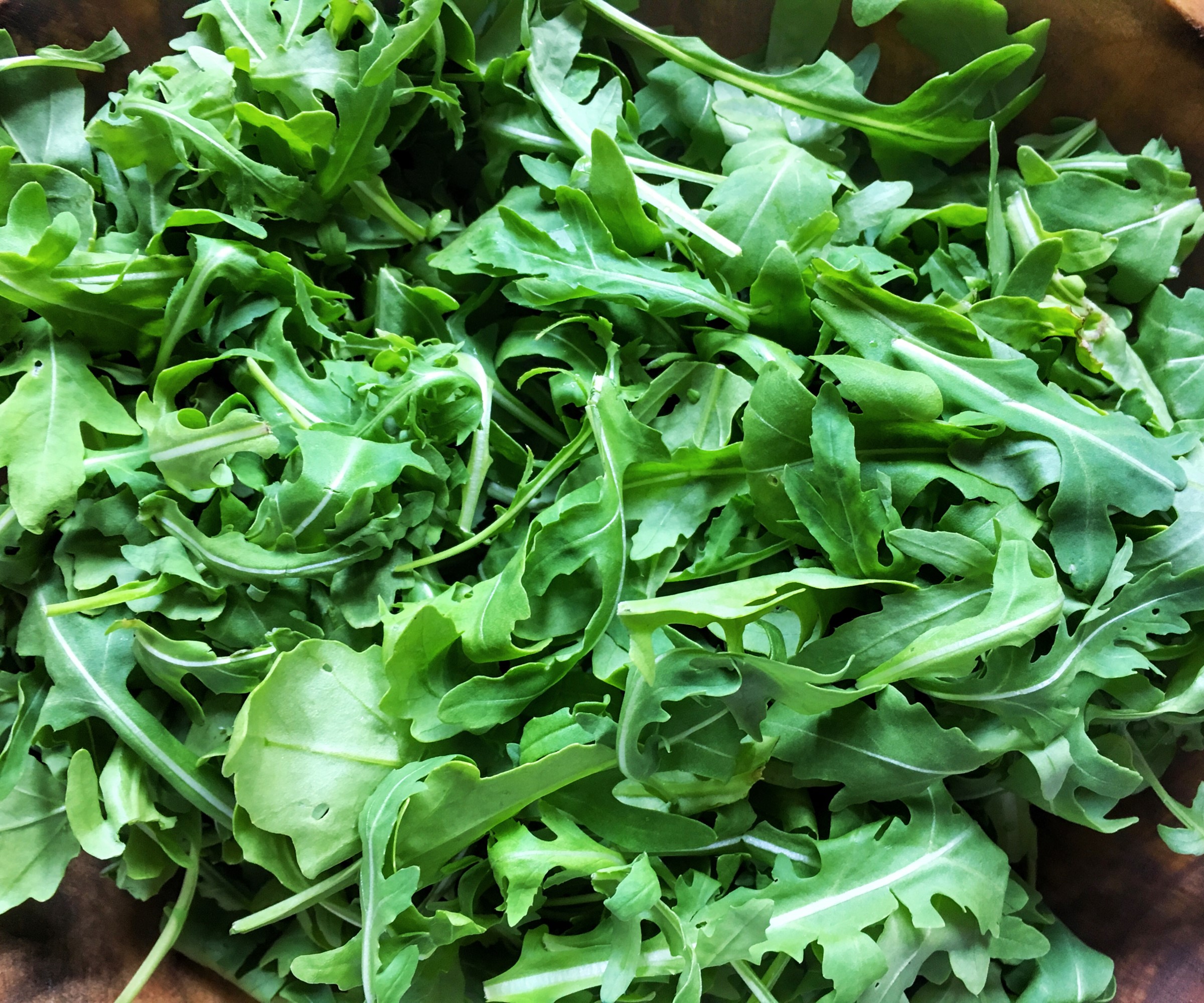
Arugula grows quick and can bring a spicey kick to a salad
- Crop group: Annual brassica
- Drought tolerance: Medium
- Harvest time: Year-round
- Where to grow: Sun or semi-shade
Arugula is one of the fastest growing vegetables you can have in a kitchen garden. It has lots of advantages, arugula grows quickly, it is simple to grow, and it can tolerate drought too.
If it endures a long and extended period of drought then the plant may produce smaller leaves, but it will keep growing and providing a harvest. The leaves may also have an extra peppery taste too during periods of drought.
11. Zucchini

Zucchini benefit from its large foliage reducing water evaporation
- Crop group: Annual cucurbit
- Drought tolerance: Medium
- Harvest time: Summer
- Where to grow: Full sun
Zucchini benefit from having deep and spreading root systems that allow them to search far and wide for moisture during dry periods. Like squash plants, they also benefit from large foliage that shades out large portions of the ground and reduces water loss from the sun. In particular, the zucchini variety ‘Dark Star’ has been bred in California for improved drought tolerance.
When growing zucchini, make sure to water it well when you plant zucchini but once it has developed its root system then it can cope with dry conditions quite well.
Buy Zucchini 'Dark Star' seeds at Walmart.
12. Okra

Okra is thought to be native to Africa
- Crop group: Annual solanaceae
- Drought tolerance: High
- Harvest time: Summer through fall
- Where to grow: Full sun
Okra thrives in warm and sunny weather, revelling in soil above 70˚F during the summer, and it is very drought tolerant. It makes Okra a fantastic choice for the southern USDA hardiness zones.
When growing okra, it will require watering to develop the plant’s tap roots but once established they are very drought-hardy plants that will grow fast in the hottest temperatures.
If you do live in a particularly dry climate, then there are lots of drought-tolerant vegetables that you can take advantage of. It means you too can enjoy the benefits of homegrown vegetables and do it without having to arduously water your crops all the time.
When you are planning to start a vegetable garden, even if it is just a small vegetable garden, it pays to consider your climate and plan your crops accordingly. Pick what will work best and be most efficient for you.

Drew has worked as a writer since 2008 and was also a professional gardener for many years. As a trained horticulturist, he worked in prestigious historic gardens, including Hanbury Hall and the world-famous Hidcote Manor Garden. He also spent time as a specialist kitchen gardener at Soho Farmhouse and Netherby Hall, where he grew vegetables, fruit, herbs, and cut flowers for restaurants. Drew has written for numerous print and online publications and is an allotment holder and garden blogger. He is shortlisted for the Digital Gardening Writer of the Year at the 2025 Garden Media Guild Awards.